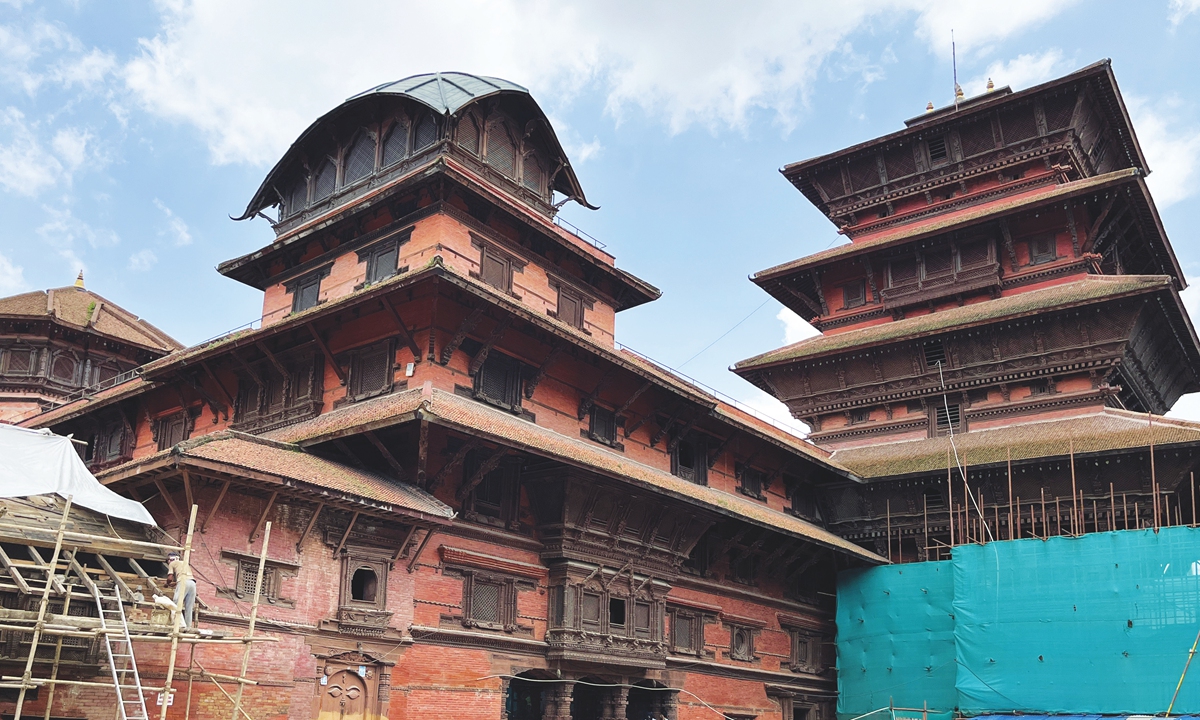
A project of the Chinese Academy of Cultural Heritage (CACH) to restore the quake-hit Basantapur Palace in Durbar Square in Nepal Photos: Courtesy of the CACH
China has been strengthening cooperation in the field of cultural heritage conservation with other countriesthrough diverse ways such as sending Chinese archaeological experts to join in projects or funding archaeological courses.
In central Afghanistan's Bamyan Valley, where stands the famous Buddhas of Bamyan, Mohammad Ali Hasanyar teaches local kids how to preserve the world's invaluable civilization.
Bamyan Province is famous for its many cultural heritages, particularly the two widely-known giant Buddhas.
In 2003, the cultural landscape and archaeological remains of Bamyan Valley were listed as a UNESCO World Heritage site.
However, due to years of war and economic hardships, locals, many of whom even moved into caves, know little about the nearby site.
Hasanyar, in his 30s, is a local archaeologist. His courses are founded and guided by a group of young scholars from China's Peking University, Lanzhou University, Wenzhou University, the Central Academy of Fine Arts and the Hong Kong-based non-profit Friends of Dunhuang.
According to Shao Xuecheng, a member of the Friends of Dunhuang, kids from impoverished families were invited to attend the training activities on relevant knowledge while distributing bread.
"Thirty-seven students registered in the archeology course, which meets once a week. The students are taught how to preserve ancient civilization and cultural heritage," Hasanyar told the Xinhua News Agency.
Hasanyar said the Chinese-funded courses are a good way to build public awareness about cultural heritage protection.
"It is a very important project because if we want to create a mentality in the society to protect cultural heritage, we have to start with the children first," he said.
"I like coming here very much since our teacher has taught us a lot about the Buddha site," Hamida, 12, said after class.
"I know that these are world cultural heritages and need to be protected now."
In addition, with specific suggestions and financial support from Chinese scholars, most of the caves near the Buddha site have been officially numbered and installed with introduction nameplates.
In May 2021, China and Iran signed a statement to jointly carry out conservation of cultural heritage. The statement said that the two sides both encourage cooperation in restoring ancient ruins, carrying out underwater archaeology and surveying cultural resources. Chinese archaeologists at Nanjing University and Iranian counterparts formed a joint archaeological team to excavate the Tepe Naderi, an Iranian national heritage site located along the ancient Silk Road, in March 2016.
The global reputation of Chinese ancient building restoration teams began to grow after teams worked on several projects in Angkor, Cambodia nearly three decades ago.
China has carried out 28 joint archaeological projects in over 10 Asian countries. These projects have further summarized the historical context, splendid achievements and contributions Chinese civilization and Asian civilization in general, have made to world civilization and provided strong support for further revealing the origins and development of Asian civilization.

